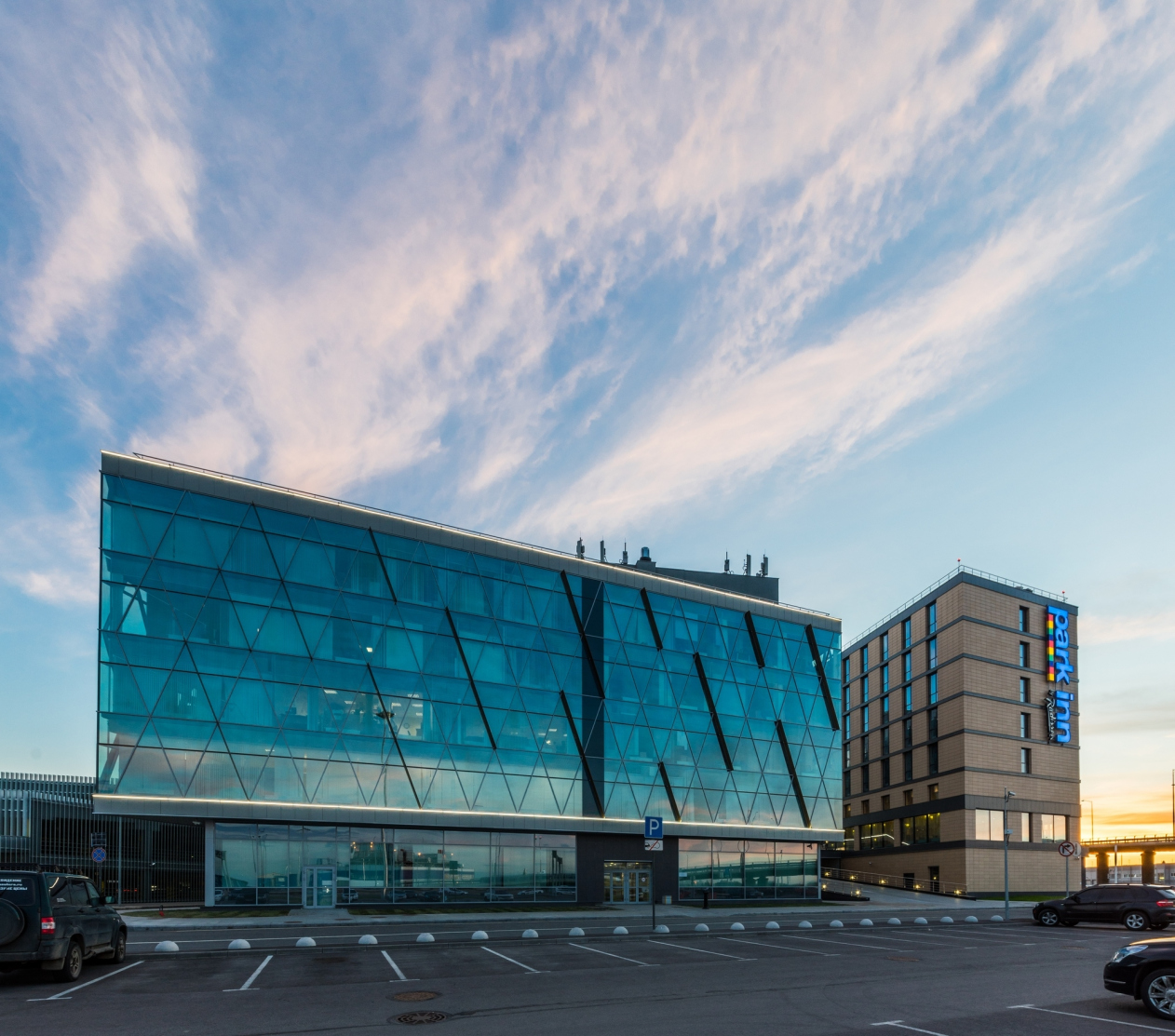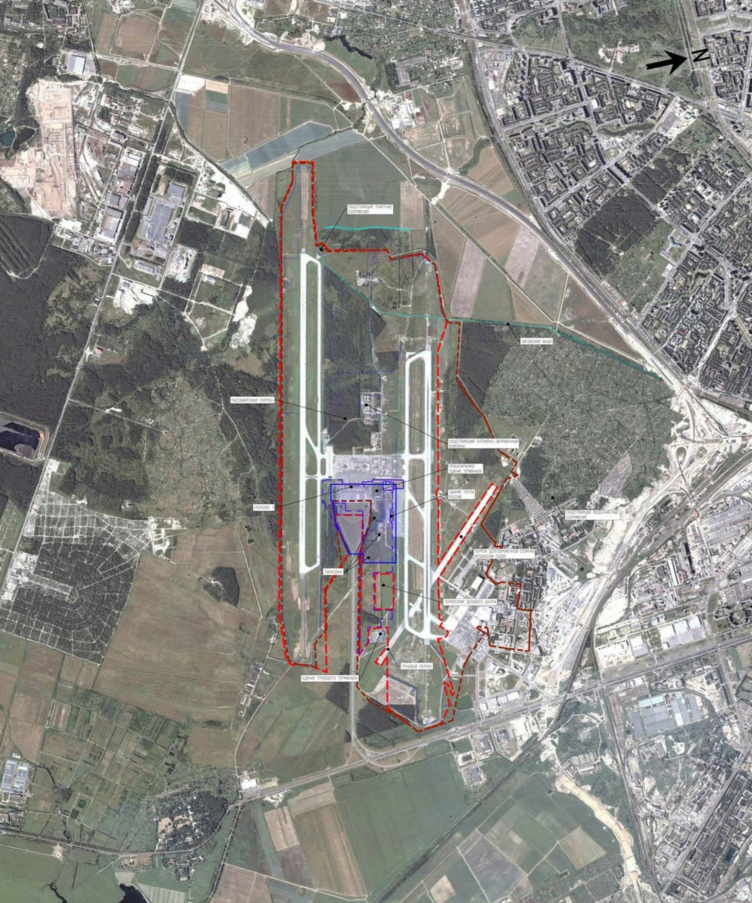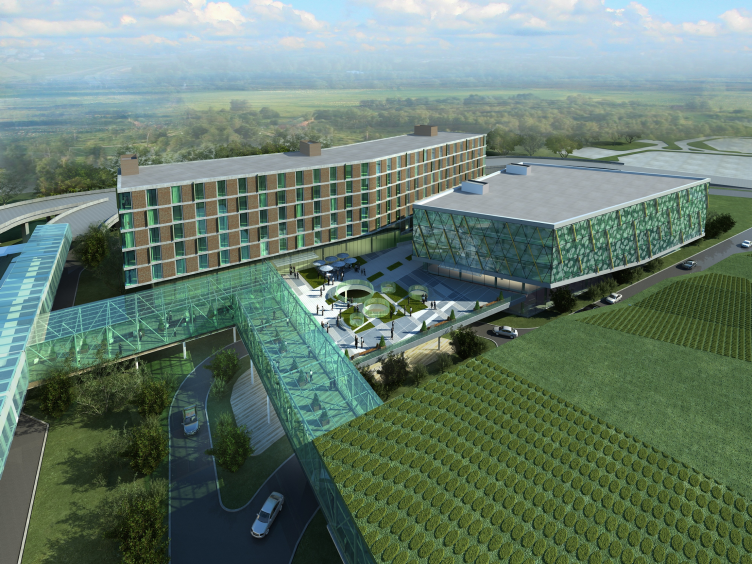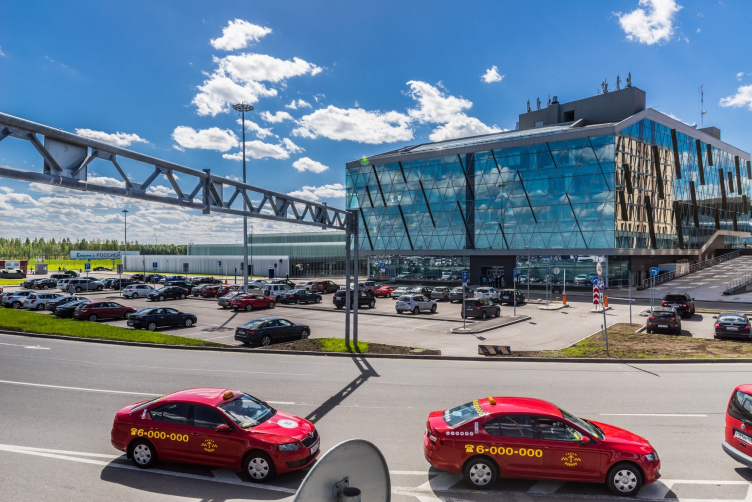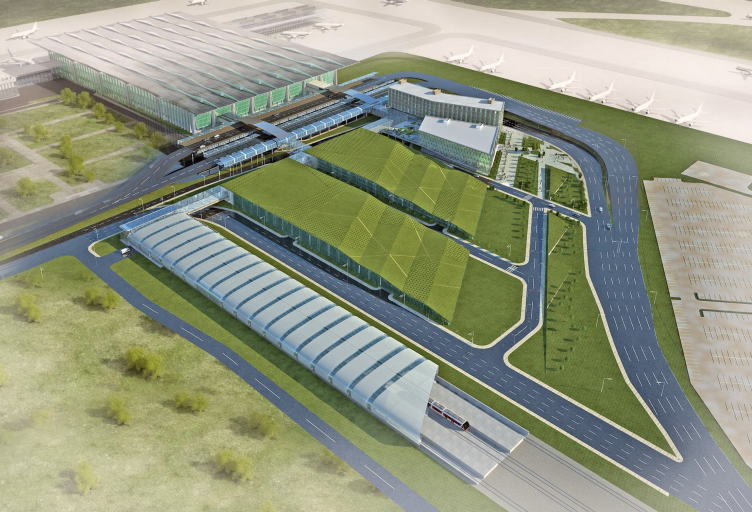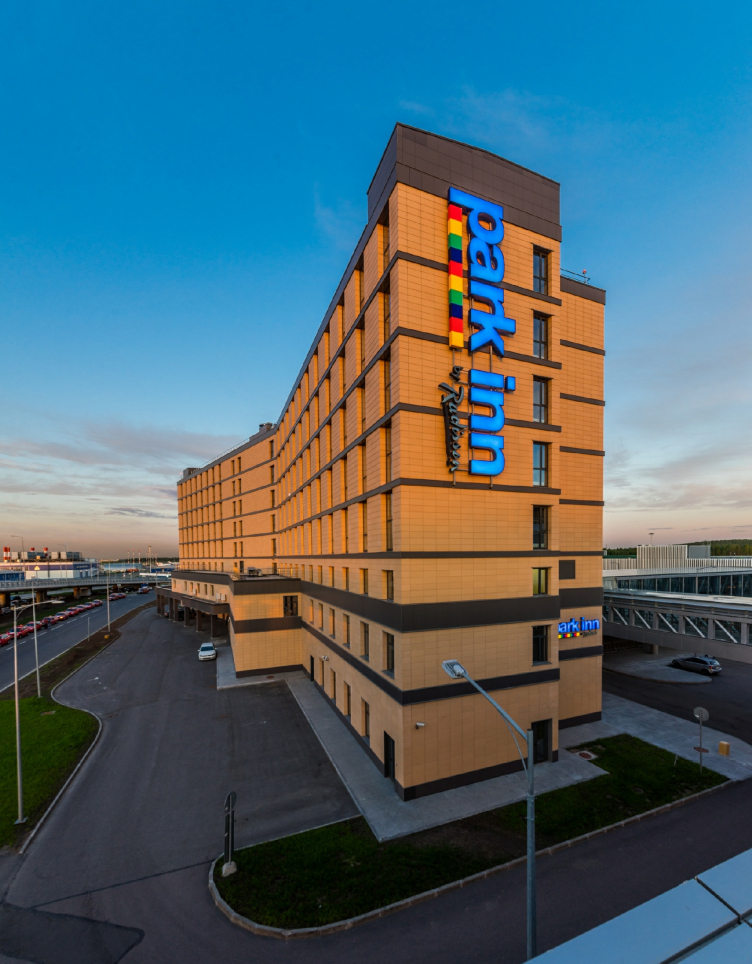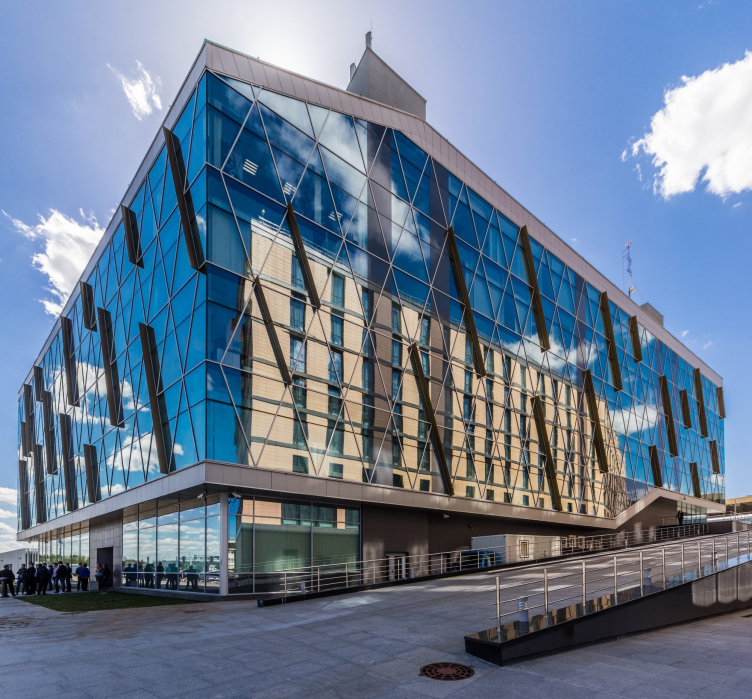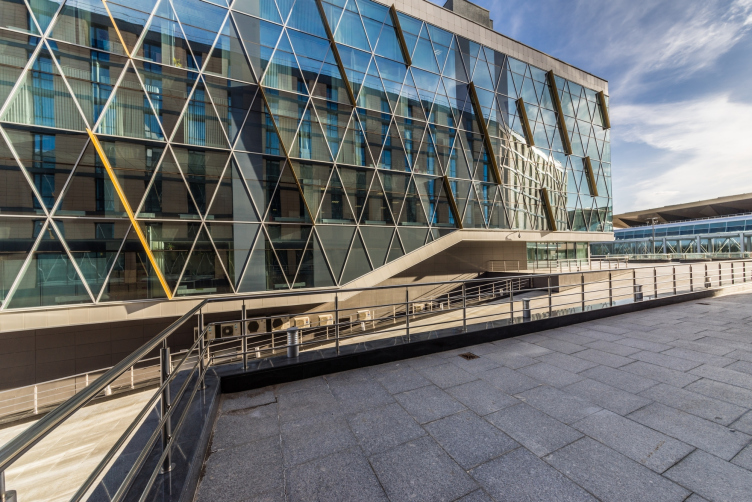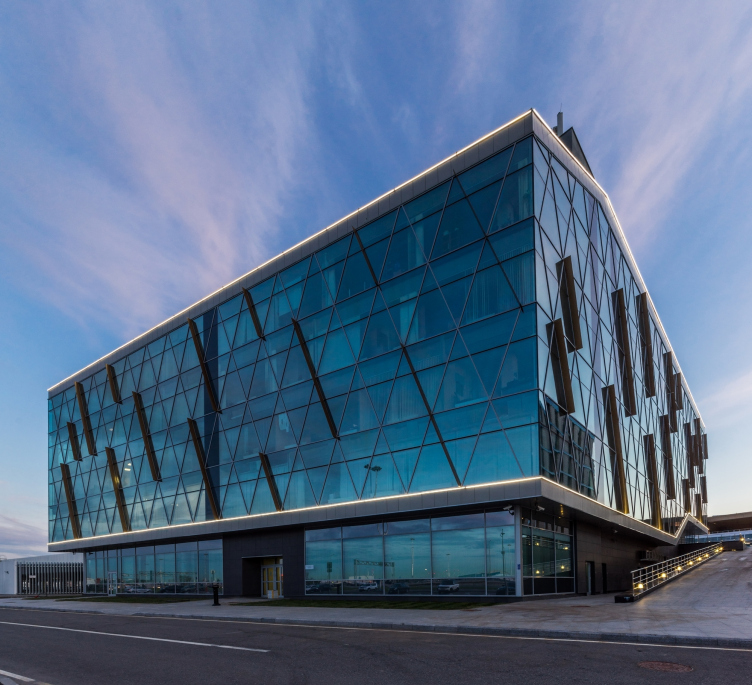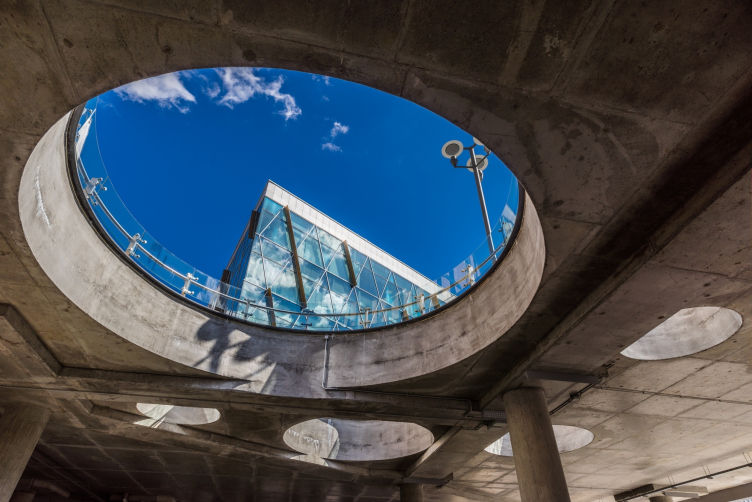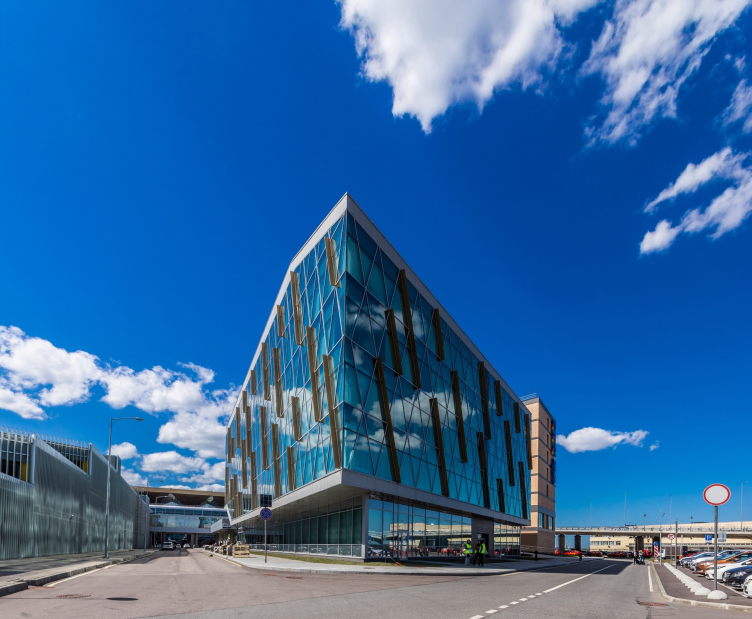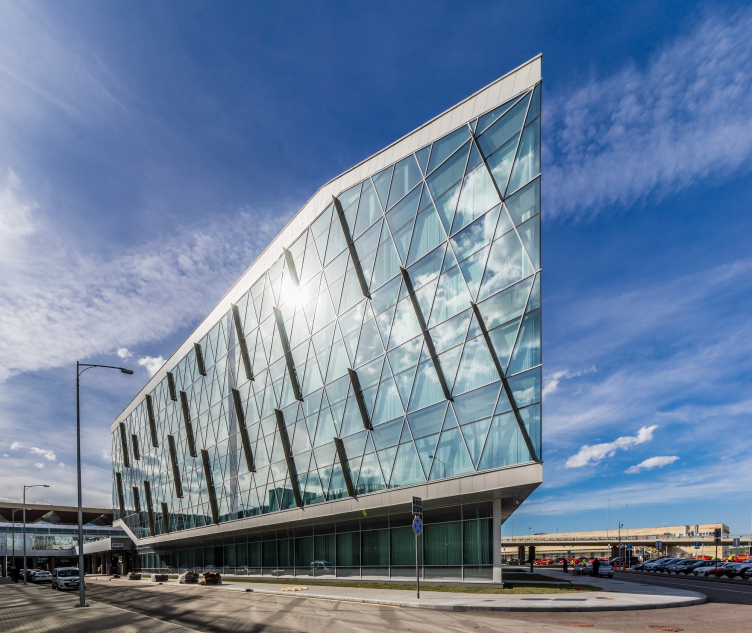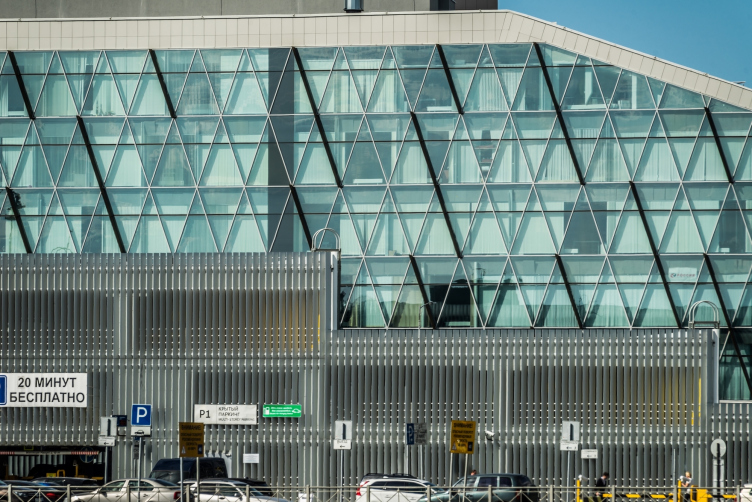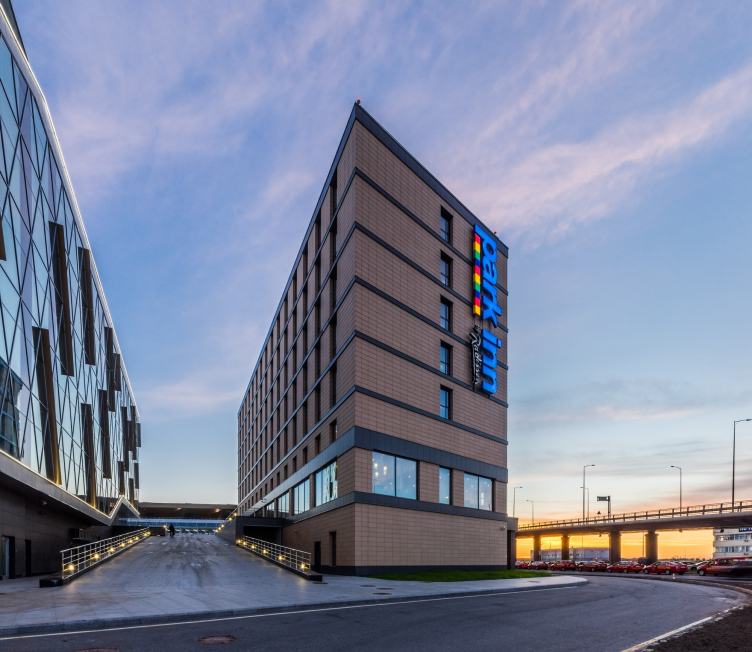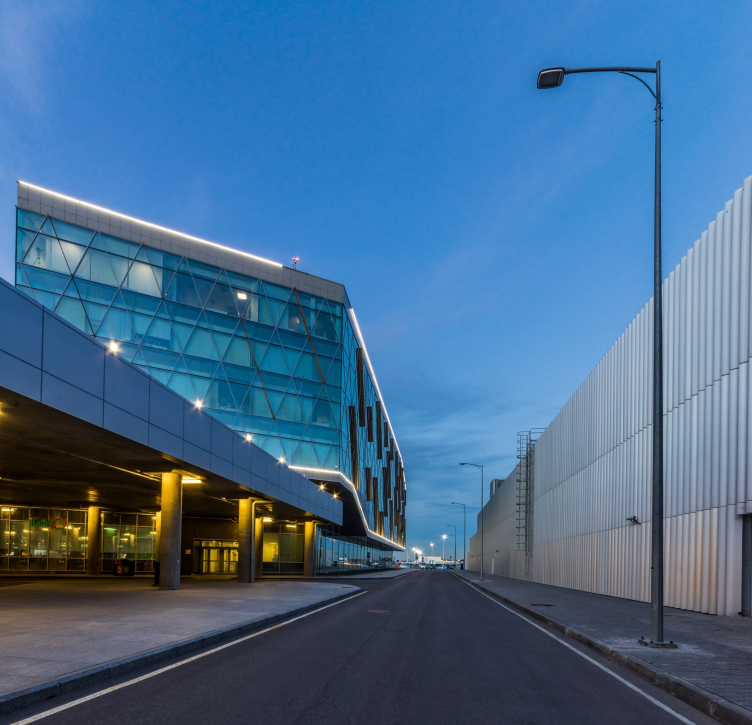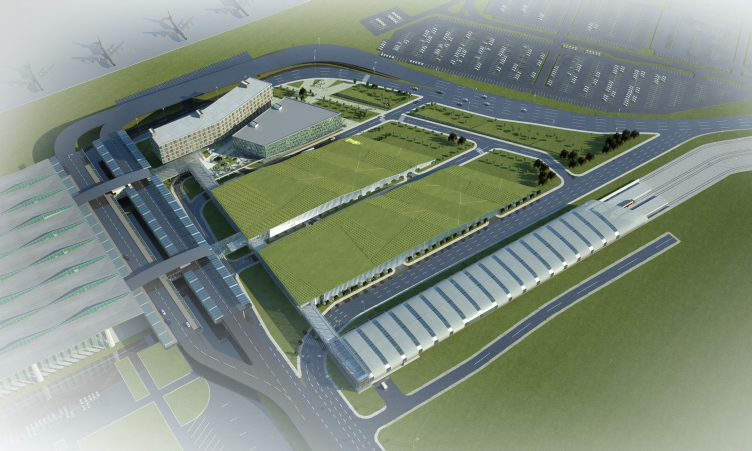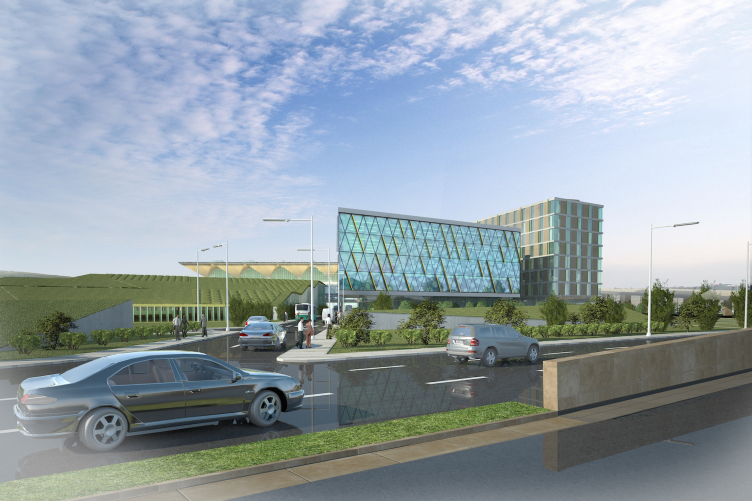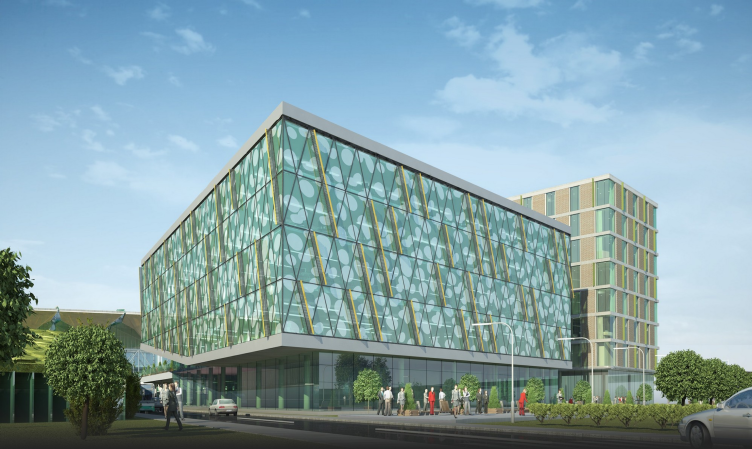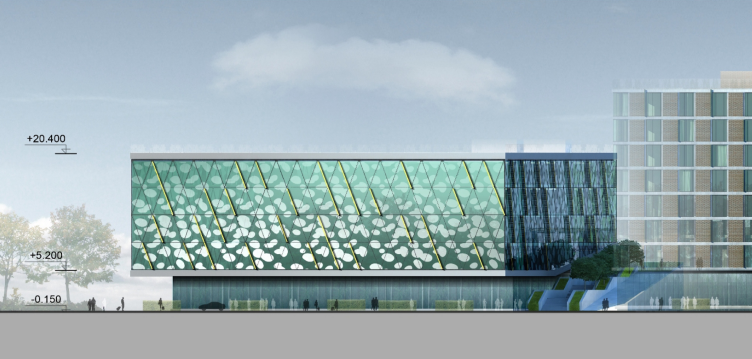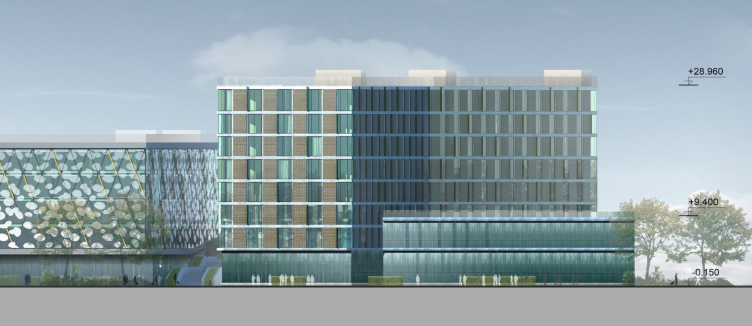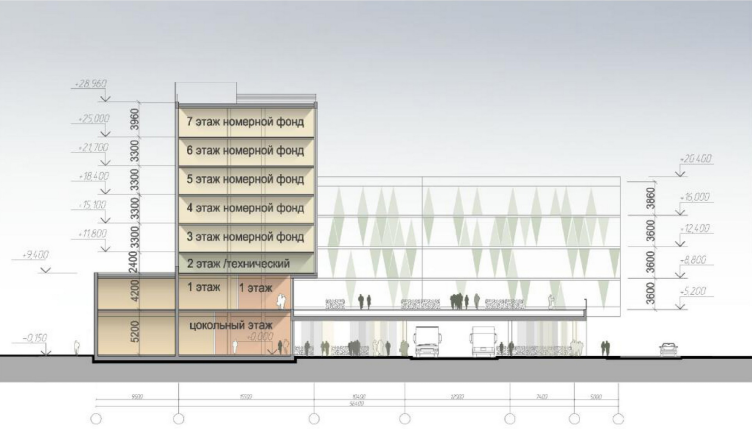The multifunctional complex consisting of a hotel, business-center and multilayer parking lots is located right in front of the new passenger terminal of the Pulkovo Airport and surrounded with approach roadways on all sides. “Nadex” – the terminal station of aeroexpress– is built at the southern border of the multi-use complex, within the same project – the express train arrives at the meeting place of the old terminal Pulkovo-1 (constructed in early 70s to a design by Alexander Zhuk and known for its five light “glasses” placed in line on top of it) with the new one; after its reconstruction in 2014 the old terminal serves for domestic flights, and the new one – for international. To the north of the multi-use complex, there is an aircraft parking place; further to the east, along the highway, line up the business- and cargo Pulkovo terminals. This places the business-hotel-parking complex at the heart of a strained transportation hub of the only airport of St. Petersburg. That is why, one of the main and most challenging tasks in its design was to optimize the flows, find logical and convenient paths for motor- and passenger traffic both within the complex and at the borders with the external structures.
The business center and the hotel near "Pulkovo" airport © A.Len
The business center and the hotel near "Pulkovo" airport. Location plan © A.Len
The business center and the hotel near "Pulkovo" airport © A.Len
As you know, the new Pulkovo Terminal was designed by the bureau of Nicholas Grimshaw that won the international tender of 2007. The same architects created the draft designs for the business-hotel complex situated next to the terminal. Afterwards, for the further elaboration of the project, Grimshaw architects hired a design company “Rambol” – an affiliate company of the largest Scandinavian enterprise “Ramboll Group” specializing in projects of industrial and public objects. For example, “Rambol” developed the building systems and distribution of traffic paths from the throughways to the hotel and business-center. During the work he company made some unfortunate deviations from the Grimshaw’s draft design that were mentioned at several Urban Planning Councils. For example, the context of the terminal was left out, and the passengers were supposed to walk the transport flyover from the parking lot. At this point “A. Len” joined the project.
“Rambol” asked us to elaborate the project, – says Sergey Oreshkin, head of “A. Len”, – we gave our proposals in the form of a draft, the project was developed in close cooperation with the city authorities. In order to provide convenient traffic and lessen the load of the strained traffic junction, we suggested organizing movement of the aeroexpress passengers through a glazed gallery that – at the same time – gives a clear view of the airfield on its right side. Another glazed gallery connects the airport terminal with the complex site: the zone of the receiving terminal is situated merely 50 feet away from the hotel and the business-center, so we proposed the shortest path to it, which is extremely convenient, even for European standards.
The business center and the hotel near "Pulkovo" airport © A.Len
We went to London with our project to show the results to Sir Nicholas Grimshaw: our spatial solutions mainly coinsided with his opinions and ideas. The company’s employees were surprised that we duly appreciated their concept and that our vision of possible solutions was so close: it turned out that Grimshaw suggested arranging parking lots, the business zone and the aeroexpress stop in the same places. They also liked our interpretation of Melnikov’s rampants: the path from the parking lot smoothely turns round the hotel façade and rising through the gallery leads to the receiving terminal”.
The business center and the hotel near "Pulkovo" airport © A.Len
The business center and the hotel near "Pulkovo" airport © A.Len
The business center and the hotel near "Pulkovo" airport © A.Len
Nevertheless, the spatial solutions of “A. Len” are fully independent. Unlike the original Grimshaw concept that tended towards an ordered, perpendicular network, the composition of Sergey Oreshnikov is based on the contrast of textures, lines and materials. The starting points were the original construction modules and the logic of the movement pattern.
In the architectural part of the project all spatial solutions are based on the modules of construction and their sizes; the strict beauty of the geometry obeys the logic of the traffic pattern. The shape of the buildings is determined by the configuration of the lot and the distribution of communication flows. The plan of the business-center represents an irregular trapeze, the hotel is a strongly stretched building consisting of two parts, set in the form of a wide open book directed towards the airfield. The eight-storey hotel and the five-storey business-center are connected with a stylobate of the basement. The back façade of one of the hotel buildings is parallel to the façade of the business-center facing it and is reflected in its shiny surface.
The business center and the hotel near "Pulkovo" airport © A.Len
The business center and the hotel near "Pulkovo" airport © A.Len
The business center and the hotel near "Pulkovo" airport. Plan of the typical floor © A.Len
Unfortunately, the finishing was not done exactly according to the project of “A. Len”. The construction was carried out by a turkish company whose work was not controlled by the general contractor. As a result, the hotel facades are covered with pink-tinged ceramic panels and lined with rigid black horizontal contours, when, according to the project, it should have been finished with light-beige limestone and also light metal horizontal molding. The façade of the business-center remained as planned: the dynamic lines of the divided glazing diagonals coinside with the main traces suggested in the Grimshaw project. The image of flying is supported by the golden “wings” of the blinds. Inserted into the diamond-shaped network of the facades, they compose a decorative metaphor for flight – so appropriate for a building surrounded by planes. The glass of the façade has ecological properties and greenish toning. “A. Len” planned to apply thin contours of clouds onto the glass, but the edition of the turkish performing company turned these clouds into white circles, so it was decided to reject this idea altogether.
The business center and the hotel near "Pulkovo" airport © A.Len
The business center and the hotel near "Pulkovo" airport © A.Len
The open part of the stylobate roof near the end façade of the business-center has cut out round holes of different diameters: they bring daylight into the underground bus parking lot, and figuratively – they echo “glasses” of the old station of Alexander Zhuk.
The business center and the hotel near "Pulkovo" airport © A.Len
Two more underground parking areas with roofed ground floors are located behind the building of the business center. The design of “A. Len” implied natural green areas on the roofs with land drainage and a park of modern urban sculpture. In a rather aggressive environment, this recreational zone would be a distraction for the passengers and guests of the hotel. However, due to the cost reasons, the roof has been covered with roll out lawns…
The business center and the hotel near "Pulkovo" airport © A.Len
But, in the end, despite all of the not so much important (even though unfortunate) deviations from the project, the main idea of contrasting interaction has been successfully embodied. The ceramic (or, according to the draft – stone, as we remember) volumes of the hotel are graceful and almost classical, due to the rhythm of the wide verticals. The shine, the diagonals and the reflections of the glass business-center form the second pole. Stone – glass, verticals – rhombuses, everything is different, but everything agrees, mostly thanks to the lucky quality of modern glass architecture to reflect its neighbors. The third pole is henotic and absorbing: lines of lamellas fencing in contours of parking volumes look like a clotting of space that only marks the wall. Let us add the idea of a green roof: with the fence of lamellas bearing the park that was supposed to provide a completely antigravitational effect – a park that either rose from the ground (like a cut out piece of watermelon), or floats on air. So, the three volumes – even though with a significant share of conventionality, represent “three centuries” of architecture: the past with its order verticals; the dynamics, shining and variable geometry of the present, and finally, the transparency and rustic naturality of the future. Another crosspoint overlaps with the intense transportation hub – the imaginative one; an addition by no means useless in the center of a growing airport.
The business center and the hotel near "Pulkovo" airport © A.Len
The business center and the hotel near "Pulkovo" airport © A.Len
The business center and the hotel near "Pulkovo" airport © A.Len
The business center and the hotel near "Pulkovo" airport © A.Len
The business center and the hotel near "Pulkovo" airport. Hotel, the eastern facade © A.Len
The business center and the hotel near "Pulkovo" airport. Facades of the parking lot © A.Len
The business center and the hotel near "Pulkovo" airport. Section view © A.Len
The business center and the hotel near "Pulkovo" airport. Section view © A.Len
